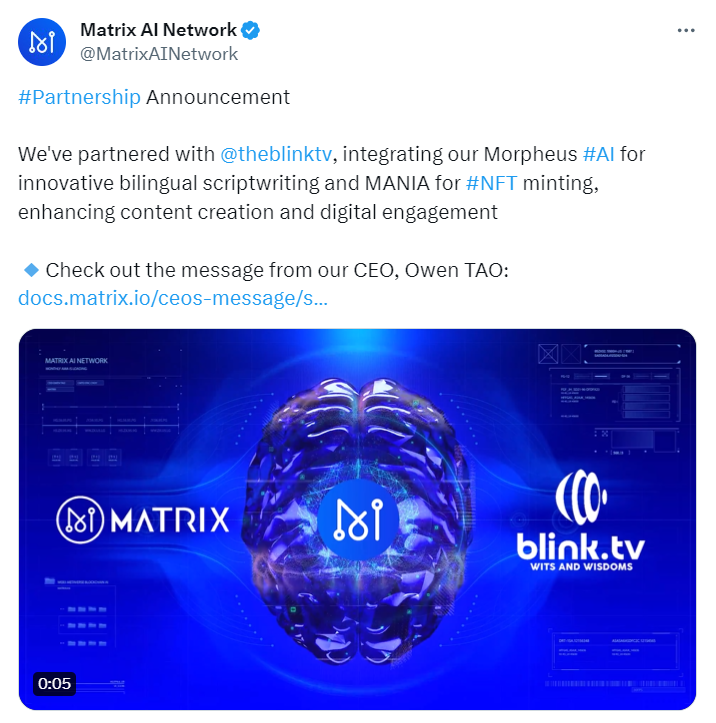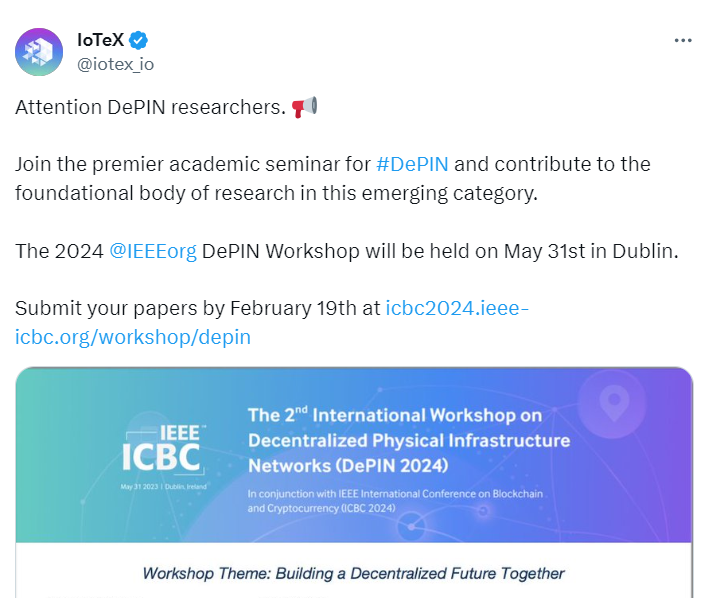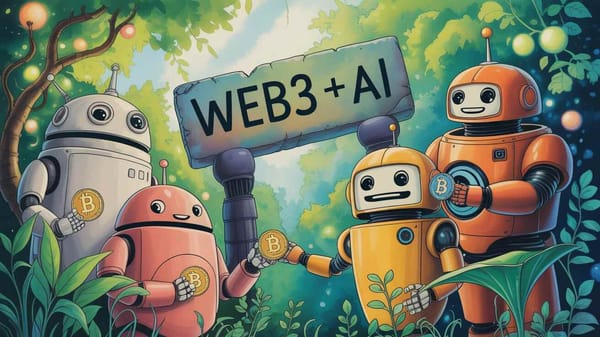The Web3 + AI Newsletter 10

Hello, everyone, and warm welcome to all newly joined subscribers!
This is the Web3 + AI newsletter, where we explore the intersection of blockchain and artificial intelligence. It has been quite a positive week for Web3 + AI since even Vitalik Buterin declared he started to see promising applications combining the two technologies. The nice bunch of partnership announcements and updates I have selected for you below is evidence in support of that claim!
Thank you for being here! Let's dive in!
What's New in the Web3 + AI Startup World?
KaJ Labs Gives $1B Web3 + AI Grant for Lithosphere and Jot Art
Kaj Labs, a foundation supporting Web3 + AI research and development, has announced a $1B grant for developers. The grant is directed at projects built on Lithosphere, a network hosting AI-powered cross-chain applications, or Jot Art, an AI-enhanced metaverse and mixed reality (XR) protocol.
The funding will be allocated over the course of the next 10 years and will look for innovative and high-impact projects in the realm of immersive experiences, virtual worlds, and other AI-enabled use cases.
The foundation also recently increased its investment in its Web3 + AI platform AGII. AGII leverages popular Large Language Models (LLMs) like GPT to provide AI-generated text, images, and code to the Web3 world.
Blink.TV to Use Matrix's Morpheus LLM for Scriptwriting
The AI-optimized blockchain Matrix AI Network struck a strategic partnership with media platform Blink.TV to integrate its in-house developed LLM Morpheus into Blink's video production process.
Through Morpheus, Blink.TV will enhance its scriptwriting process, enabling the production of diverse content formats that range from motivational speeches to micro-films, across various platforms including TikTok, Twitter (X), YouTube, and Instagram.

Moreover, Blink.TV will also leverage Matrix's authentication tool MANIA to create NFTs for each video they produce.
Peaq Partners with Wormhole, Sets Up Peaq Verify
The DePIN-focused blockchain Peaq Network announced its integration with Wormhole - one of the leading protocols for cross-chain connectivity and interoperability. Through this partnership, DePIN projects built on Peaq will have access to both the liquidity and the user base of 30+ other blockchains, such as Ethereum, Base, Aptos, Solana, and Polygon.

Peaq had previously integrated core functions with Solana and Cosmos. The recent integration with Wormhole is seen as a logical next step, creating the first bridge for cross-chain asset movement within peaq’s ecosystem.
The integration is currently operational on peaq’s testnet, known as Agung, serving as the first outbound blockchain bridge. Looking ahead, peaq plans to launch its mainnet in 2024, further strengthening the bridge’s role in connecting the platform with the broader Web3 space.
What is more, a few days ago, Peaq launched a framework for DePIN data verification called Peaq Verify. Its mission is to verify the data of DePIN machines like vehicles, robots, and devices - a critical problem in the DePIN space up until now. Peaq's solution leverages cryptography, machine learning, and trusted oracles to verify the data, whereas it doesn't use any centralized storage or middlemen.
.png)
Aleph.im Launches Cloud Marketplace Twentysix Cloud
A few days ago, the DePIN Aleph.im presented Twentysix Cloud - a marketplace for decentralized cloud computing services. As I discussed in my DePIN piece, the appetite for computational resources is only increasing amid the rising interest in LLMs and other AI applications, so such ventures are welcome.

Twentysix Cloud offers “a full range of blockchain-based storage, compute engine, indexing, and AI solutions for businesses and applications”. It operates on a Pay-As-You-Go (PAYG) model, allowing users to pay only for the resources they have used, whereas the actual payments go through Avalanche and Superfluid.
IoTeX Calls for DePIN Researchers
As you can see, the DePIN narrative is getting more and more popular by the minute. IoTeX, another DePIN-dedicated blockchain, called for researchers to take part in The Second International Workshop on Decentralized Physical Infrastructure Networks (DePIN 2024). The event is part of the IEE International Conference on Blockchain and Cryptocurrency. It will take place in May in Dublin, Ireland, and will be chaired by IoTeX and Kent State University representatives. All you blockchain researchers out there, hurry up and start writing!


Noteworthy Podcasts, Articles, Events
What Is a DePIN, and Why Is It Important?
To be honest, I got tired of reading big media pieces about the powerful convergence of blockchain and artificial intelligence, which do not give any detail on the practicalities. I believe the audience wants and deserves to know more and to hear the names of those pushing the transformation forward.
That is why I started a series of deeper analyses into particular Web3 + AI use cases, starting with the burgeoning space of DePINs. DePINs are all the rage right now in the crypto world, but as with the majority of the crypto narratives, the term is largely unknown outside the Web3 space. Let's bridge that gap together!

Disclaimer: None of this should or could be considered financial advice. You should not take my words for granted, rather, do your own research (DYOR) and share your thoughts to create a fruitful discussion.








